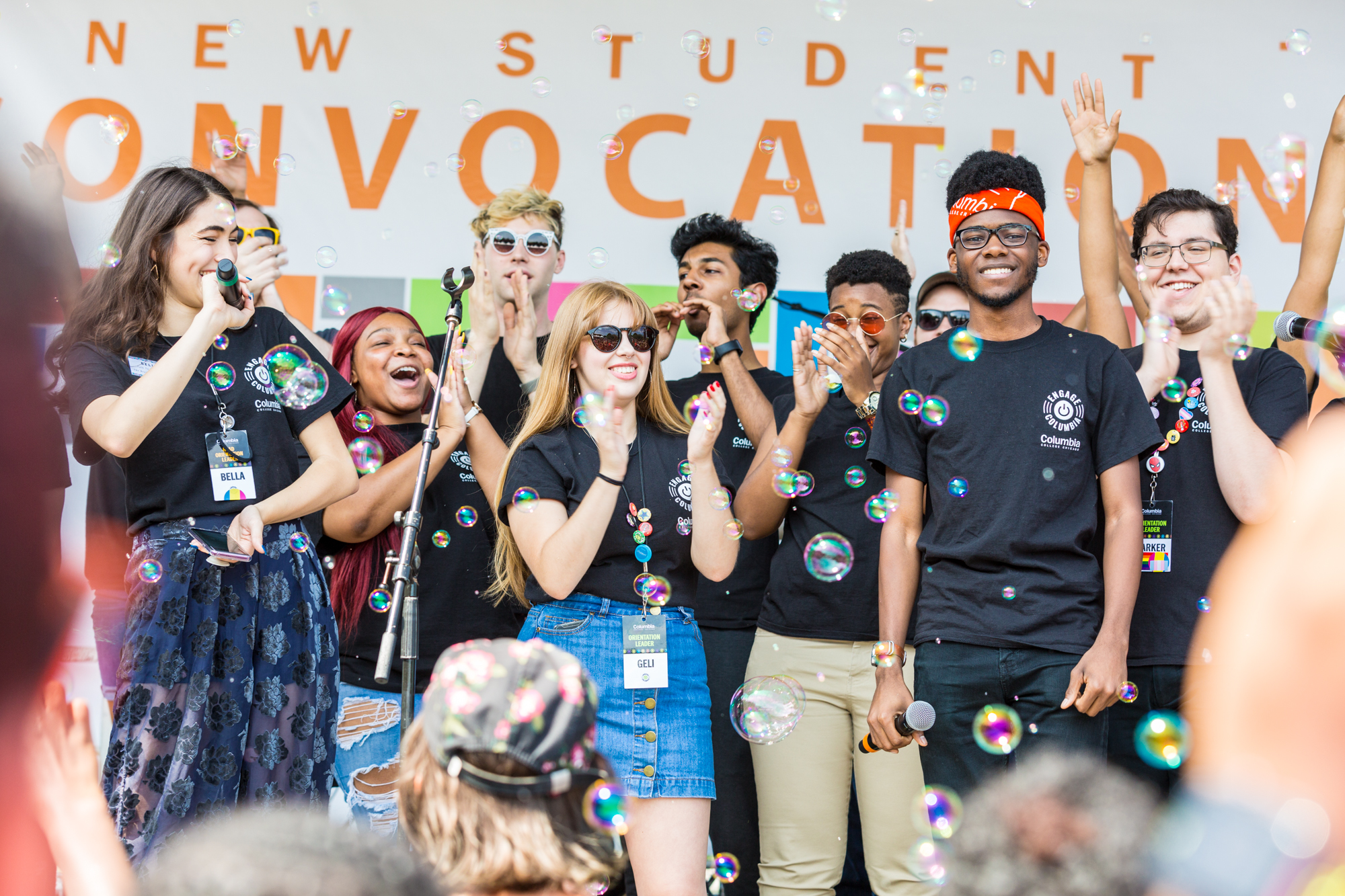Mission and History

Columbia College Chicago is an undergraduate and graduate institution whose principal commitment is to provide a comprehensive educational opportunity in the arts, communications, and public information within a context of enlightened liberal education. Columbia’s intent is to educate students who will communicate creatively and shape the public’s perceptions of issues and events and who will author the culture of their times. Columbia is an urban institution whose students reflect the economic, racial, cultural, and educational diversity of contemporary America. Columbia conducts education in close relationship to a vital urban reality and serves an important civic purpose by active engagement in the life and culture of the city of Chicago.
Columbia's purpose is:
- to educate students for creative occupations in diverse fields of the arts and media and to encourage awareness of their aesthetic relationship and the opportunity of professional choice among them;
- to extend educational opportunity by admitting unreservedly (at the undergraduate level) a student population with creative ability in, or inclination to, the subjects of Columbia's interest;
- to provide a college climate that offers students an opportunity to try themselves out, to explore, and to discover what they can and want to do;
- to give educational emphasis to the work of a subject by providing a practical setting, professional facilities, and the example and guidance of an inventive faculty who work professionally at the subjects they teach;
- to teach students to do expertly the work they like, to master the crafts of their intended occupations, and to discover alternative opportunities to employ their talents in settings other than customary marketplaces;
- to help students to find out who they are and to discover their own voices, respect their own individuality, and improve their self-esteem and self-confidence;
- to offer specialized graduate programs which combine a strong conceptual emphasis with practical professional education, preparing students with mature interests to be both competent artists and successful professionals.
History
Columbia College Chicago was founded in 1890 as the Columbia School of Oratory by Mary A. Blood and Ida Morey Riley, both graduates of the Monroe Conservatory of Oratory, (now Emerson College, in Boston, Massachusetts).
In 1904 the school changed its name to the Columbia College of Expression and in 1927, the college became a sister institution with the Pestalozzi-Froebel Teachers College.
The school left its partnership with the Pestalozzi-Froebel Teachers College in 1944 with a revised name, Columbia College, and Norman Alexandroff serving as its president.
In 1961, Mirron (Mike) Alexandroff, became president and created a liberal arts college with a progressive social agenda. For the next 30 years, he built Columbia into an urban institution that offered coursework taught by some of the most creative professionals in Chicago.
Columbia was awarded full accreditation in 1974 by the North Central Association of Colleges and Schools and purchased its first building in the South Loop at 600 S. Michigan Ave. In 1984, Columbia received full accreditation for its graduate programs.
In 1992, Dr. John B. Duff was named president and during his tenure, the school changed its name to Columbia College Chicago, expanded its educational programs, and added to its physical campus in the South Loop.
In 2000, Dr. Warrick L. Carter served as president and ushered in new student-based initatives such as Manifest and Shop Columbia, partnered with local universities to construct the University Center of Chicago, purchased new campus buildings, added new curricula, and built Columbia's first newly constructed building, the Media Production Center.
In July 2013, Dr. Kwang-Wu Kim became Columbia College Chicago’s tenth president. He holds a doctor of musical arts degree and an artist diploma from the Peabody Institute of Johns Hopkins University. He is an outspoken advocate for the arts, a proponent of expanding the role of creative practice in society, and seeks to change the approach to how artists are educated.
Building on its heritage of creativity, innovation, and strength, Columbia College Chicago continues to challenge its students to realize their abilities according to the school's motto, "esse quam videri" – to be rather than to seem and encourages its students to author the culture of their times.
Equal Opportunity
Columbia College complies with all local, state, and federal laws and regulations concerning civil rights. Admission and practices of the College are free of any discrimination based on age, race, color, creed, sex, religion, handicap, disability, sexual orientation, gender identity or expression, and national or ethnic origin.
The policies, programs, activities, course offerings, descriptions, faculty, and calendars listed in this catalog are subject to change, revision, modification, and/or deletion at any time without notice.